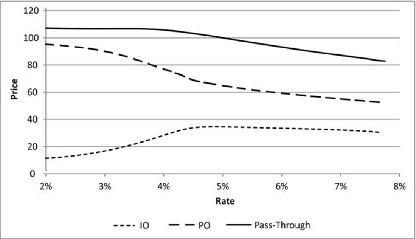[email protected]
New Member
Hi david,
I have a doubt in
Q. 5. Sarah is a risk manager responsible for the fixed income portfolio of a large insurance company. The portfolio contains a 30-year zero coupon bond issued by the US Treasury (STRIPS) with a 5% yield. What is the bond’s DV01?
a. 0.0161
b. 0.0665
c. 0.0692
d. 0.0694
Answer: b
Explanation: The DV01 of a zero-coupon is DV01 = [{30 / (1 + y/2)^2T+1} *100 ]/10000 = 0.0665
Why they have taken formula to calculate modified duration as D/(1 + y/2)^2T+1 when it should be only D/(1 + y/2)?
Also this can be solved in other way , where we are discounting the price of bond?
DV01 = Price * Modified Duration / 10,000;
PV = 100 * EXP(-5%*30) = $22.31
Modified duration = 30/(1+5%/2) = 29.2683
DV01 = $22.73 * 29.26829 / 10,000 = 0.06652
And one other way using cont compounding . though my answer was not accurate
which is
p(y)= S * exp(-rt)
=100 exp(-30y)
and as DV01 is slope
so
p'(y)= -3000 exp(-30y)
=3000 exp(-30*.05)
=-669.39
and divide it by 10000 so we get .0669(not accurate though)
So please tell me, which approach is right? or if I am doing things wrong??
I have a doubt in
Q. 5. Sarah is a risk manager responsible for the fixed income portfolio of a large insurance company. The portfolio contains a 30-year zero coupon bond issued by the US Treasury (STRIPS) with a 5% yield. What is the bond’s DV01?
a. 0.0161
b. 0.0665
c. 0.0692
d. 0.0694
Answer: b
Explanation: The DV01 of a zero-coupon is DV01 = [{30 / (1 + y/2)^2T+1} *100 ]/10000 = 0.0665
Why they have taken formula to calculate modified duration as D/(1 + y/2)^2T+1 when it should be only D/(1 + y/2)?
Also this can be solved in other way , where we are discounting the price of bond?
DV01 = Price * Modified Duration / 10,000;
PV = 100 * EXP(-5%*30) = $22.31
Modified duration = 30/(1+5%/2) = 29.2683
DV01 = $22.73 * 29.26829 / 10,000 = 0.06652
And one other way using cont compounding . though my answer was not accurate
which is
p(y)= S * exp(-rt)
=100 exp(-30y)
and as DV01 is slope
so
p'(y)= -3000 exp(-30y)
=3000 exp(-30*.05)
=-669.39
and divide it by 10000 so we get .0669(not accurate though)
So please tell me, which approach is right? or if I am doing things wrong??



